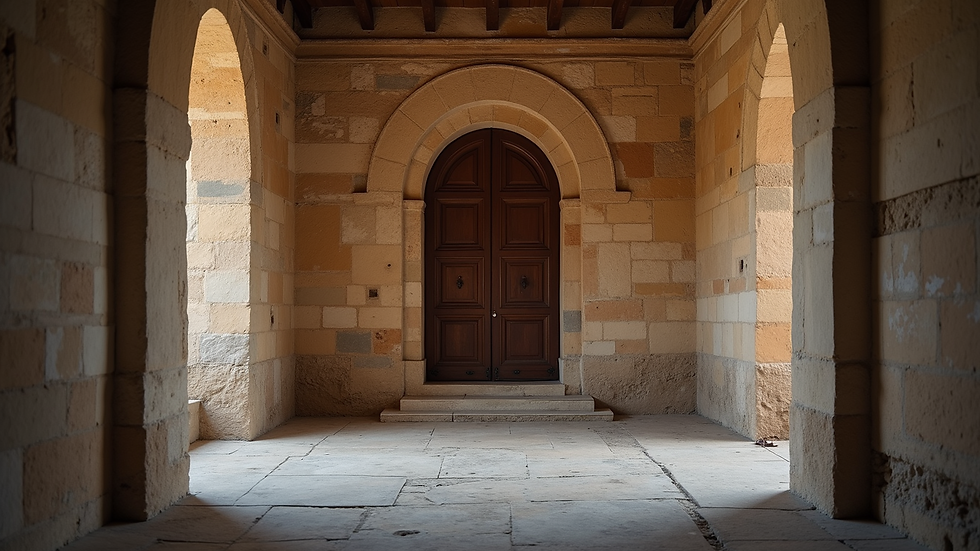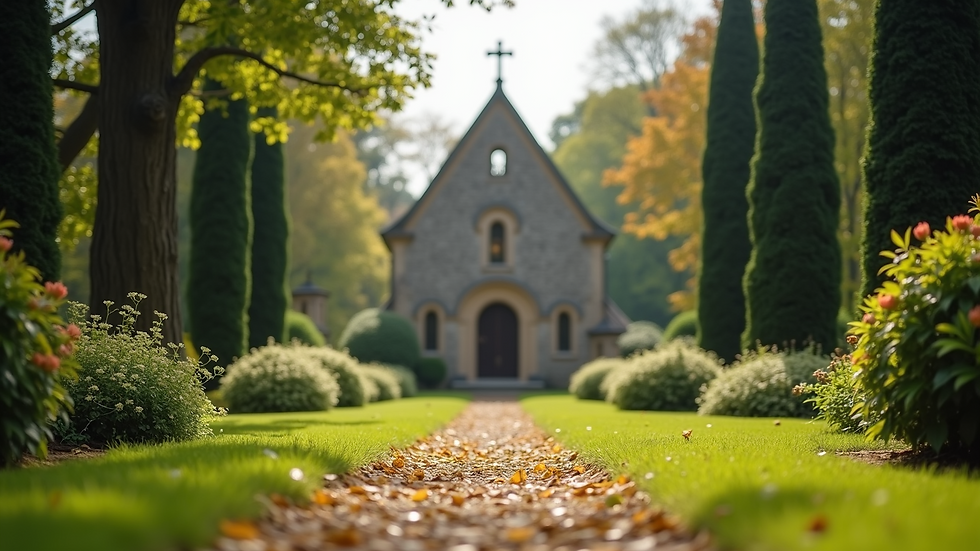Exploring the Depths of Catholic Church Investigations
- info587016
- Jul 23, 2025
- 4 min read
The Catholic Church is one of the oldest institutions in the world, with a rich history spanning over two millennia. However, this history is also marred by numerous controversies and investigations. From sexual abuse scandals to financial misconduct, many aspects of the Catholic Church have come under scrutiny. In this blog post, we will delve into the various investigations that have affected the Catholic Church and explore what they reveal about this powerful institution.
Analyzing Religious Institutions
Investigations into the Catholic Church often shine a light on the darker aspects of its operations. These investigations serve to hold the institution accountable for various wrongdoings, including abuse allegations and fraudulent activities. In recent years, there has been a growing need for transparency and accountability within the church. This shift in public perception has led to a series of inquiries and reports aimed at uncovering the truth.

As a result of these increasing pressures, several high-profile investigations have emerged globally. Countries such as the United States, Australia, and various European nations have launched their own inquiries. These investigations often reveal shocking statistics and facts, encouraging more people to come forward with their experiences. In the United States alone, it is estimated that nearly 4,000 priests have been accused of sexual abuse over the last several decades.
The findings from these investigations underscore the urgent need for reform within the Church. Developing better policies and practices that prioritize the safety and well-being of its members is fundamental to restoring faith in the institution.
Historical Context
To better understand the implications of these Catholic Church investigations, it’s essential to look at the historical context surrounding the Church's operations. The Church has long been perceived as an institution above societal norms, which has often shielded it from the scrutiny faced by other organizations.
Historically, the Catholic Church has wielded immense power, influencing various aspects of life, including politics, education, and community governance. With this power came a lack of accountability, allowing darker practices to persist without question. The investigations currently in motion challenge this historical norm and aim to dismantle the protective barriers that have allowed misconduct to proliferate.

The revelations brought forth by these investigations also force us to confront the notion of forgiveness within the church. The Catholic Church preaches forgiveness and redemption but struggles when faced with the need for accountability and justice. The challenge lies in balancing these principles while ensuring that victims receive the support and closure they deserve.
Investigating Abuse Claims
One of the most significant components of Catholic Church investigations revolves around claims of abuse, particularly sexual abuse. The Church has faced numerous allegations in various countries over the years, leading to growing frustration among victims and advocates.
Investigative reports, such as those produced by the Pennsylvania grand jury, have outlined extensive details about abuse cases and cover-ups that have occurred over the decades. These findings detail how the Church often placed its reputation above the welfare of the victims. In the Pennsylvania report, it was noted that over 300 priests were identified as having committed abuse over a period of 70 years.
Such alarming statistics have urged many survivors to come forward, hoping to achieve justice. Local and state governments have started to implement laws that allow victims to file civil suits against the Church, resulting in significant financial ramifications. These legal actions serve as a catalyst for further investigations into the systematic failures of the Church to protect its vulnerable members.
Financial Irregularities and Investigative Audits
Beyond abuse allegations, financial irregularities have also plagued the Catholic Church. Investigations have uncovered various cases of mismanagement and unethical financial practices. These revelations have raised questions about accountability and transparency within the Church's financial dealings.
In many cases, investigations reveal how funds intended for charitable efforts were misappropriated. Several dioceses in the United States have faced bankruptcy due to the financial fallout from abuse litigation, leading to public scrutiny over how dioceses manage their assets.

To address these issues, various dioceses have begun conducting their own internal audits and establishing transparent financial practices. While this represents a step in the right direction, many advocates call for systematic change. A more robust oversight mechanism could prevent future irregularities and restore the public's trust.
The Role of the Media
Media coverage plays a crucial role in exposing the realities surrounding Catholic Church investigations. Investigative journalists have worked tirelessly to uncover stories that have long been silenced. Their efforts have focused on amplifying the voices of survivors and bringing the Church's injustices to the forefront of public discourse.
In many cases, it has taken years for the media to report on these abuses due to the culture of silence surrounding the Church. By confronting these issues head-on, media outlets have ignited public outrage and compelled investigators to take action.
The Church's response to media coverage varies but has included attempts at both cooperation and suppression. There have been instances where the Church attempted to downplay allegations or issue vague statements. However, continued media pressure and public accountability have forced the institution to act.
Moving Forward: The Path to Reform
Looking ahead, effective reform within the Catholic Church is essential for rebuilding trust and establishing a safe environment for all its members. Survivors deserve justice, and the Church must acknowledge its past mistakes while actively working to resolve underlying issues.
There is an ongoing need for more rigorous training and education on safeguarding within church institutions. Implementing programs focused on prevention and proper reporting mechanisms can significantly enhance the Church's ability to protect its members.
Moreover, global collaboration between religious institutions and secular organizations may yield positive outcomes. By working together to design better policies, they can strengthen child protection standards and promote ethical conduct in all religious settings.
In conclusion, the journey toward reform is a long and challenging process, but the Catholic Church has an opportunity to emerge as a more accountable and transparent institution. Facing the realities of its past will pave the way for a brighter and more hopeful future.





This is a very informative and enlightening article. I wish that the Christian Church as a whole can acknowledge the need to improve governance by improving employment relations.